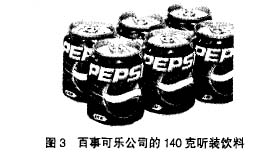Packaging and "convenience" marriage (below)
Second, suitable packaging volume design
To bring convenience to different consumer groups, packaging design needs to provide diversified options for different needs. In particular, the purpose of the “self-only purchase†of today’s solitary residents is very clear. They prefer packaging designs that can provide individuals with convenience. Businesses and designers began to notice that making their products suitable for personal use, some packaging began to reduce the packaging capacity, and the size of the packaging was reduced. Such as H. J's condiment packaging capacity is only 350 grams. Personal skin care products and medicines are also beginning to be designed for individual use. Consumers can buy 140 grams of shampoo and they can choose to buy a roll of toilet paper or l2 rolls of toilet paper.
Pepsi took into account the convenience factor and began to change the 3-litre bottle to 2-litre, and later used a 350-gram small bottle, which was more suitable for personal drinking and packaged every 6 vials in a group. Consumers purchase large quantities of cola at a time, and each individual bottle is also suitable for one dose at a time, avoiding the problem of unfavorable preservation after the large bottled cola is opened. Large bottles of 3 litres and 2 liters are more suitable for use during parties and are suitable for occasions where they can be consumed in one go. If it is daily use, then consumers prefer this 6-bottle combination package. After a large number of consumer surveys, PepsiCo found that 250 grams of canned Coke and 350 grams of bottled drinks were too much for a single drink, and recently developed 140 grams of canned drinks (see Figure 3). Listening to or listening to a combination of packages can provide consumers with more choices. Consumers are willing to purchase such small-sized canned drinks. They can drink them at a time without having to carry the package all day. The successful experience of packaging design is to provide consumers with diversified choices and convenience.

Third, clever combination package design
The packaging of personal items also began to focus on providing consumers with convenient designs. In the packaging design of personal cosmetics, mascara and lipstick are often combined into a combo package. The newly introduced Hotbox mini suit design combines innovative concepts (see Figure 4). The suit is only 1.5 inches tall. The interior is equipped with a mirror, lipstick, eye shadow, mascara, and the exterior is silver plated and polished. , as beautiful as a cigarette box. The package is small and exquisite, it can be stuffed into a small wallet, a pocket, or even hidden in a bra. This lightweight mini package leads the fashion trend and is similar to the beautiful suit of the Swiss Army Knife. Each part of the box is hinged and fitted with a lid. Each part of the combination can be opened by flicking with fingers. Consumers are very fond of this packaging design, it is small, lightweight, practical, easy to use anywhere, anytime.

Regardless of the product, most brands value creative packaging designs in order to gain market competitive advantage and increase sales. Therefore, they are willing to invest funds to develop convenient packaging designs [3]. However, the introduction of such packaging also has certain challenges. The first is the issue of cost. The production cost of such packaging is often higher than that of general product packaging, so the price is slightly higher. Can consumers make purchases because of increased convenience factors and ignore the price factor? Another challenge is that the limitations of the manufacturing process often limit the idea of ​​innovation, so as designers need to understand the packaging production process and related technologies, In this way, design and production can be combined to make the design idea practical. Despite the challenges, more and more innovative designs in this area have been adopted and brands have been used as a strategic factor to dominate the market. In recent years, many successful examples have shown that only by recognizing that “convenient†designs can play an important role in promoting consumers’ purchase decisions, can they share more market opportunities and establish brand loyalty.
Jiang Wen School of Art, Hunan Normal University
Source: "Journal of Zhuzhou Institute of Technology"